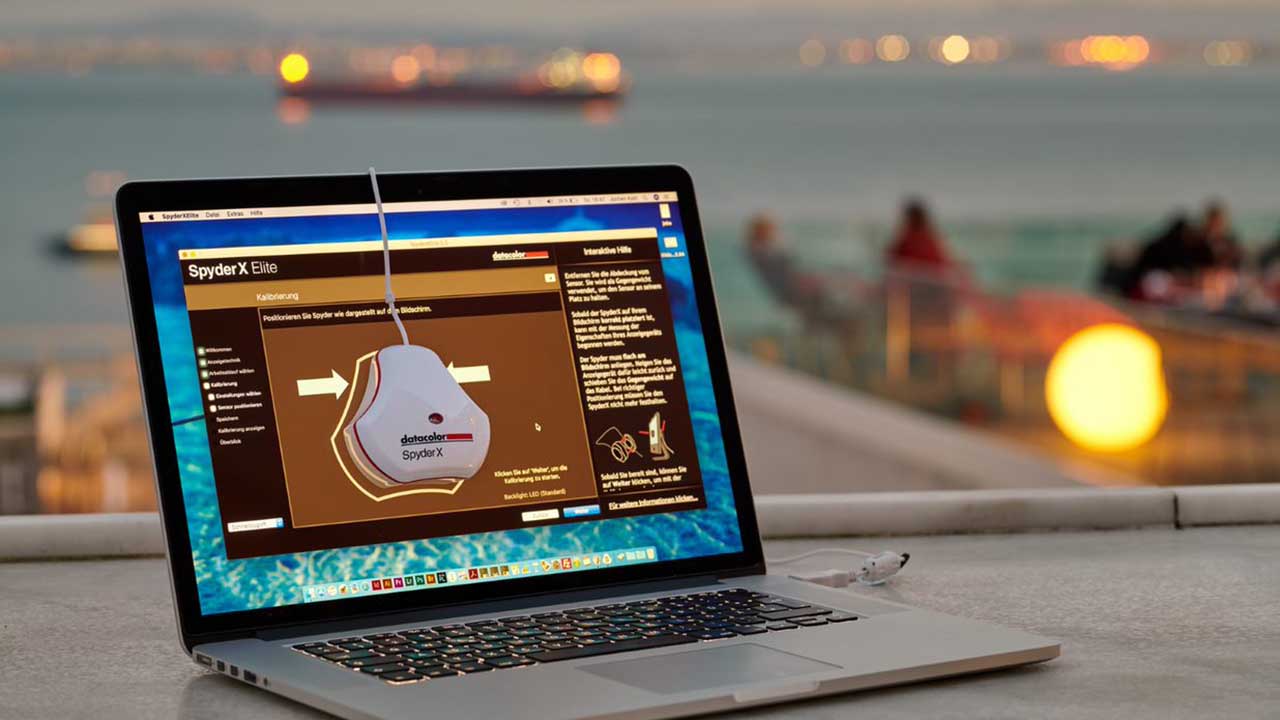After spending hours painstakingly enhancing and editing your work, you want to be sure that others will see your images, or video, just the same as you do with perfect colour, contrast and exposure.
Upgrade to DataColor SpyderX Pro or SpyderX Elite
From 9th to 15th September 2019 @Datacolor will be carrying out an upgrade promotion!
To discover more on the offers available check out bit.ly/2lJBLec
Your monitor is the tool to do this, but, how do you know if your display is actually accurate, and how do you check it?
Imagine that you’ve been working on a landscape with deep blue skies and rich green rolling hills. It’s taken hours to perfect, and then you post that image or print it out, only to discover that what you thought was blue was actually purple, and that green, well…
How did this happen when it all looked so good on your monitor?
A monitor’s colour can be influenced by several factors, calibration, ambient light and even human intervention. And if it’s not showing the colours correctly, your editing can make your images looks worse, not better.
That’s why a properly calibrated monitor is an essential part of colour management. It will ensure that the colour and tones you see on screen are accurate, and will be reproduced elsewhere in exactly the same way.
The monitor’s accuracy can be checked with a device called a spectrophotometer, and the DataColor SpyderX is a great choice
It measures the light colour projected by the monitor and then feeds the results through the software. It compares the results against other monitors’ or standards such as sRGB or Adobe RGB.
The software then adjusts your monitor’s colour, contrast and brightness to calibrate it.
Colour management essentially employs a set of colour standards that are applied across different mediums, such as print, TV, video and many other formats, so that everyone sees the same colour whatever the device or medium.
As long as your monitor conforms to the colour profile you’re producing imagery for, then you can be sure that others will see the images colour, tone and contrast reproduced for them just as you intended.
The DataColor SpyderX handles the calibration process for you and with a couple of clicks, it ensures that your monitor conforms.
There are two versions of the SpyderX, Pro and Elite. The Pro version will suit most photographers and videographers while the Elite version gives a few more options such as display matching and enhanced profile settings choices. That means the Pro this is more suited to professionals working across multiple machines or in a studio situation.
How do you calibrate your monitor?
When your monitor arrives, it will have been calibrated in the factory. This one size fits all approach is good for general use, but it’s far from ideal for imaging.
In the past, monitor calibration was an art carried out by few and with varying results. Now, the use of dedicated hardware such as the SpyderX far outstrips the accuracy of even the most experienced manual calibrator.
DataColor’s SpyderX utilises the latest calibration technology and enables you to fine-tune your monitor to your intended use. That can be processing your images, editing video or typing up the yearly accounts.
Using a monitor calibrator such as the SpyderX enables you to get your monitor’s colour calibration spot-on so your images look as you expect wherever you post or print them. This compact calibration device not only makes it easy to calibrate for photography but also to create quick swappable profiles for video, documents or even gaming.

Through the SpyderX software, you can switch between each of your working environments to ensure that the colours you see on screen are always correct.
One aspect of monitor calibration that many people don’t factor in is the change of environmental light. As you switch between artificial bulbs to daylight and back, the colour temperature of your working environment changes and that means the image on your screen can look different.
To overcome this issue, the SpyderX can be left plugged into your workstation, accurately monitoring the ambient light and adjusting your monitor automatically to compensate.
It’s not just your monitor’s colour that’s calibrated, the brightness and contrast are also pulled into line. Many of us work with our monitors blaring at full brightness which enhances shadow detail that often won’t exist when shown on other displays or in prints.
Incorrect brightness also has a detrimental effect on colour, for example, oversaturating and losing tone, even changing the hue of a colour.
Likewise, contrast is often pushed to the monitor’s limits, crushing mid-tone detail. This contrast boost might look great on screen, but it rarely translates well to paper.
Calibration will balance the settings to ensure that you’re looking at the most accurate representation of the image as possible.
Is there anything else you should do after calibrating your monitor?
The monitor calibration process is quick and easy with the SpyderX the Pro or Elite software.
After calibration, you can then work in the knowledge that the images displayed on your monitor are showing as accurately as possible and that they will look just as good when they’re reproduced elsewhere. However, it’s important to check your monitor on a regular basis and recalibrate as necessary.
The initial calibration can take some time, but once it’s done, the re-calibration is a relatively quick and easy procedure. All you need to do is follow the onscreen instructions and click go.
Helpfully, the SpyderX software reminds you when your monitor needs to be recalibrated. You can even set the frequency of the reminder.
You should also keep the SpyderX by your computer, continually monitoring the light level and adjusting accordingly to maintain the monitor’s display accuracy on a day-to-day basis.
Upgrade to DataColor SpyderX Pro or SpyderX Elite
From 9th to 15th September 2019 @Datacolor will be carrying out an upgrade promotion!
To discover more on the offers available check out bit.ly/2lJBLec



